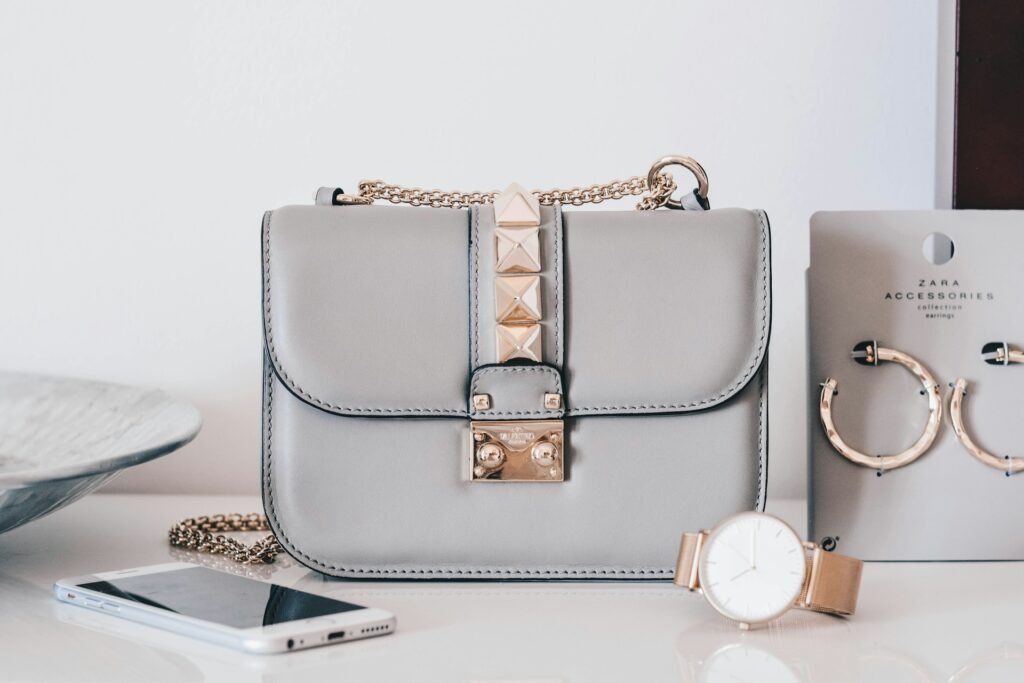Fashion is ever-changing, and while clothing often takes center stage, accessories have consistently played a pivotal role in defining style, identity, and cultural moments. From ornate hats of the early 20th century to today’s digital wearable tech, fashion accessories have not only evolved in style but also in function and significance.
1920s: The Age of Glamour and Rebellion
The Roaring Twenties brought a dramatic shift in women’s fashion, and accessories became bold statements of the new liberated spirit. Flapper headbands, feather boas, long pearl necklaces, and cloche hats were emblematic of the Jazz Age. Women embraced shorter hairstyles and accessorized with dramatic pieces that complemented their fringed dresses, signifying newfound social freedoms.
1940s: Function Meets Fashion
The 1940s, marked by World War II, saw practicality influencing fashion. Accessories like turbans and snoods helped women maintain hairdos while working in factories. Brooches and gloves remained popular, though materials were often substituted due to wartime shortages. Utility was key, yet women still found ways to express femininity through modest but elegant accessories.
1950s: Elegance and Femininity
Post-war prosperity brought back luxury. The 1950s embraced a polished look—pearls, cat-eye sunglasses, and structured handbags became essential to the well-groomed woman’s wardrobe. Hats and gloves were must-haves for public appearances, reinforcing ideals of ladylike poise and social status.
1960s: Revolution and Youth Culture
The swinging sixties exploded with color, experimentation, and youth-driven fashion. Accessories like oversized sunglasses, plastic jewelry, go-go boots, and bold prints took center stage. The mod subculture and icons like Twiggy and Jackie Kennedy influenced trends, making statement accessories an integral part of self-expression.
1970s: Bohemian Vibes and Disco Glam
This decade was a tale of two aesthetics: earthy boho and sparkling disco. Think floppy hats, fringe bags, and leather headbands on one end, and glitzy chokers, gold chains, and dramatic platform shoes on the other. Accessories in the ’70s were about freedom, whether channeling natural beauty or dazzling on the dance floor.
1980s: Bigger, Bolder, Brighter
The 1980s were all about excess. Accessories were larger-than-life—chunky plastic earrings, wide belts, shoulder pads, fingerless gloves, and layers of bangles dominated. Power dressing and pop culture icons like Madonna and Prince made accessories critical in crafting bold, expressive looks.
1990s: Minimalism Meets Street Style
In contrast to the flamboyance of the ‘80s, the ’90s leaned into minimalism with a grunge and urban twist. Think chokers, tiny backpacks, scrunchies, and bucket hats. Hip-hop culture introduced gold chains and oversized accessories, while rave and skate cultures inspired vibrant, utilitarian pieces.
2000s: Bling Culture and Logo Mania
The early 2000s embraced a flashy, branded aesthetic. Accessories like bedazzled belts, trucker hats, and large sunglasses were ubiquitous. Luxury logos were everywhere—on bags, sunglasses, and even phone charms. Pop stars and reality TV personalities greatly influenced the rise of over-the-top accessorizing.
2010s: The Rise of Personalization and Sustainability
The 2010s marked the age of individual style. From minimalist Scandinavian designs to boho festival accessories like flower crowns, fashion became more personalized. The rise of sustainable and ethical fashion brought attention to handmade and eco-friendly accessories. Tech also entered the mix, with smartwatches and fitness trackers becoming both functional and fashionable.
2020s: Digital, Diverse, and Purposeful
The current decade continues to redefine accessories in an increasingly digital and inclusive world. Virtual fashion and NFTs are starting to change how we think about accessories. Gender-fluid designs, multifunctional pieces, and a strong emphasis on sustainable materials dominate trends. From reusable bags as status symbols to smart jewelry, today’s accessories reflect a blend of innovation, conscience, and cultural awareness.
Conclusion
Fashion accessories have mirrored societal changes, technological progress, and cultural movements. What began as simple adornment has become a powerful means of expression, function, and even activism. As we look ahead, accessories will likely continue to evolve—bridging the physical and digital worlds while reflecting the dynamic spirit of each generation.

